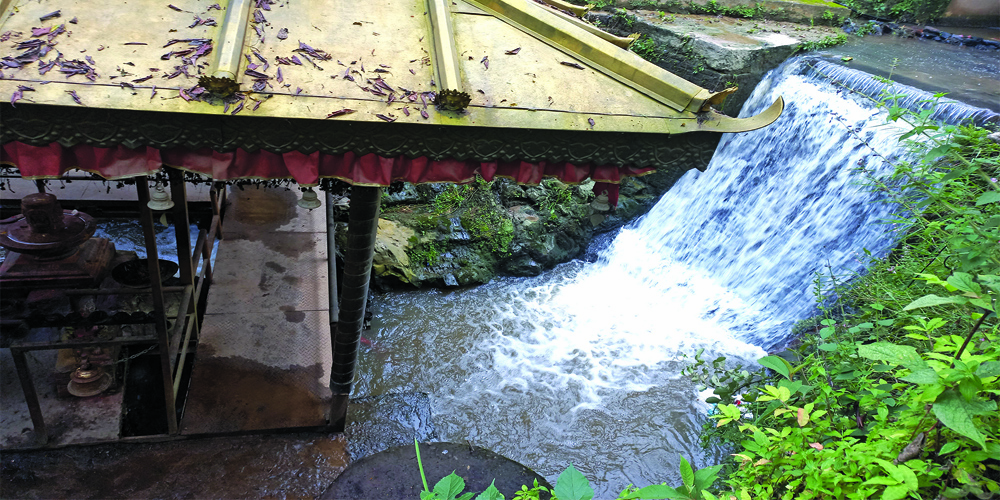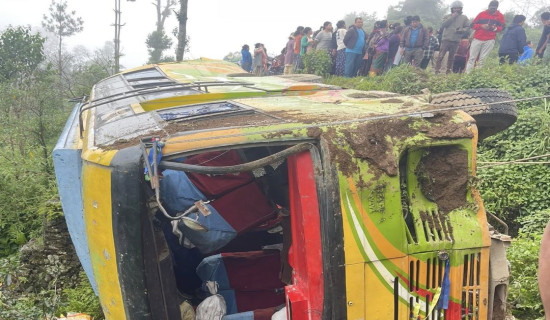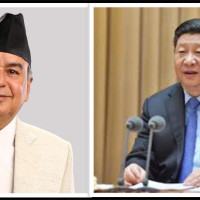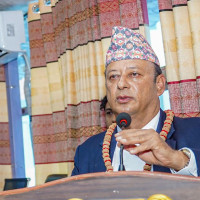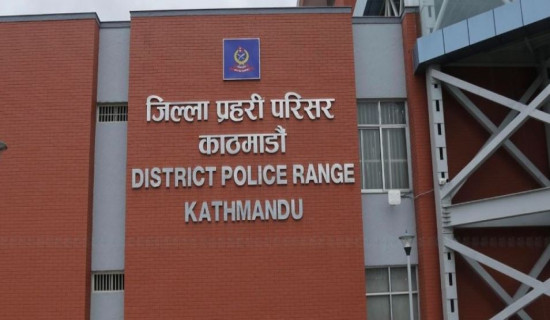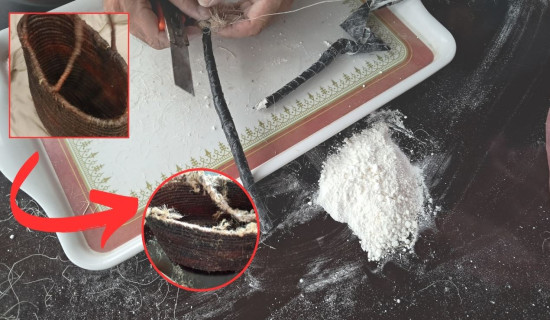- Saturday, 2 August 2025
Charkhandi: A Temple On Water
Chandra Kumar Phuyal
Nestled between Dadhikot and Sirutar of Suryabinayak Municipality of Bhaktapur, Charkhandi is a unique pilgrimage of historical, archaeological, and religious importance.
Located at the height of about 2400 m. from the sea level, just 15 kilometers away from the central urban area of the valley, this serene pilgrimage has been one of the most popular heritages among people of all walks of life from time immemorial.
Having interesting mythologies to narrate, Charkhandi also has ample sources in store to explore especially for nature-lovers, researchers, archaeologists, and writers besides having unmatched significance for pilgrims.
When the ends of two Holy rivers named Kokha Ganga and Padma Ganga that originate from the head of Dadhikot meet at a point making a confluence, a captivating waterfall is created there breeding another Holy river named Charkhandi.
This Holy river then flows towards the Northen side; a rare and dissimilar path from the common rivers which is religiously believed to be a pious direction.
That is why the people around Charkhandi choose to take the dead body of their relatives for cremation believing that the departed soul would rest in heaven if they do so there.
A well-managed Ghat (pyre) for cremation has also been set up there at the Eastern side of the confluence. Next to it, there is an ancient Kunda- the essence of the place accompanied by a stone-carved inscription. The epigraph is believed to be older than the Lichhavi era which is yet to be investigated by the related specialists to unfold the facts.
The Charkhandi River flows bathing the Kunda as the Kunda has immersed right from the river's path. Just above the Kunda, a beautiful Charkhandi temple devoted to the God Mahadev has uniquely been set up in a stunning pagoda style which is popularly known as the 'Temple above the water.
Accompanied with it, numerous other historical stone-carved images devoting to Chankhuti Mahadev, Saraswoti, Radhakrishna, Shiva Linga, Buddha, Manakamana, Balkumari, Rama, Sita, Laxman, Hanuman, and Saptarishi are installed.
There is also a beautiful temple dedicated to God Ganesh on the other side of the bridge across the Charkhandi River. According to a locals' belief, the ancient image of Ganesh was spotted by a farmer centuries ago while digging the field around.
The image is also believed to be older than the Lichhavi era.
The magnificence of this Holy place has also been described in the Shreeskandapuraane
Himawotkhanda Nepalmaahaatmya Shadbishomdhya //26// as a result the mythological, archaeological, and religious importance of this place is incredibly high among the people.
The confluence of two rivers, the Holy Charkhandi river uniquely flowing towards the Northern side, a beautiful waterfall, the historical and religious Kunda surrounded by numerous images of Gods and Goddesses, the burbling sound of the river, the chirpings of the birds in the woods surrounding this serene Holy place all make this pilgrimage truly unique and breathtaking. In addition, there are also three beautiful temples built in pagoda style dedicated to the Goddess Saraswoti, God Mahadev, and God Ganesh on the southern side of the Kunda.
With a beautiful resting place in presence of soothing Peepal trees and some monuments just around the temples, the total atmosphere is truly luring and serene as various kinds of flowers in the jungle surrounding this place reverberate the air with their invigorating fragrance. Keep exploring the spot and its vicinities for a while, you would certainly feel that you are in the real heaven.
According to mythology, a sick sparrow suffering from Kusta Rog (Leprosy) fell to the Kunda while flying away in pain and dipped down into the Kunda's water. Surprisingly, after a while, it flew away after getting rid of the disease completely. The recovery of the Charo (Bird) surprised everybody who was eye-witnessing the incident.
And, as a result, people began to call the Kunda '' Charo- Kunda'' (Shakuni in the Newari language). Then, the word is corrupted and easily pronounced later as Charkhandi by the locals.
Then, people of all ages and walks of life began to visit this place seeking progress and prosperity and taking a bath without failure. It is believed that those who take a bath in the water of the Kunda, will recover from cancer and skin diseases. Similarly, farmers spray water from the Kunda on their crops and vegetables to ward off insects and potential diseases.
According to another mythology, suddenly a child who was left to play by his parents near the place of the present temple began to yell asking for a Chakhunti (meaning bird in the Newari language) after he saw a lovely bird while the child's parents were working in the field.
The farmers ran chasing the beautiful bird to catch it but it abruptly disappeared into a den (big hole) which still exists there now. They entered the den in search of the bird but surprisingly spotted a flaming Shivalinga.
Every year there is a huge (Chankhutirtha Melaa) popularly known as Bisket Jatra (fare) conducted on the last day of Chaitra and the 1st of Baishakh of every year. During the fair, feasts are thrown and enjoyed by the locals in the presence of all family members, relatives, and friends.
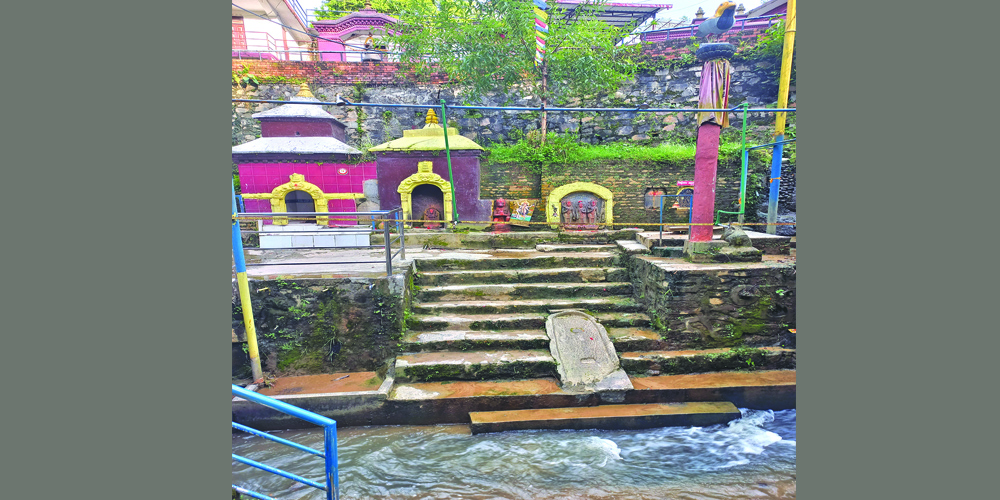
This is one of the greatest festivals of abundant fanfare and religious importance to the people around especially the Shrestha and Manandhar communities.
People from across the valley, especially Dadhikot, Pakandole, Sikaritaar, and Gaamcha, attend the Jatra. During this historical Jaatra, Rath Yaatra is also conducted. The images of Bhairavi, Shree Baalkumari, and Ganesh are kept in the Rath (Cart) and carried across the city with traditional Dhime music, dance, and songs for the people's good health, peace, progress, and prosperity.
''The people in Nepal don't get satisfied only by praying and worshipping the Gods, they also want to play with them in disguise of Gods. The activities in Bisket Jatra are a living example of that rich traditional culture," said Ratna Sayami, a local historian.
If the concerned department would pay enough heed to bring out the hidden facts and information and put enough effort into promoting it, this place is sure to be a centre of attraction for the tourists in and out of the country.
Route
From Koteshwor, one can take a private or public vehicle based on your preference through the Araniko Highway to reach New Thimi, and then drift to the Southern side road leading to Charkhandi via Gamcha Chowk.
There is a recently built black-topped road to the temple. It takes around 40 minutes to drive to reach the place from Koteshwor.
You can also choose another route through Sirutar via Ballot.
Both of the roads are black-topped and comfortable till Charkhandi, the destination.
(Phuyal is a freelancer.ckphuyal1975@gmail.com)
How did you feel after reading this news?

